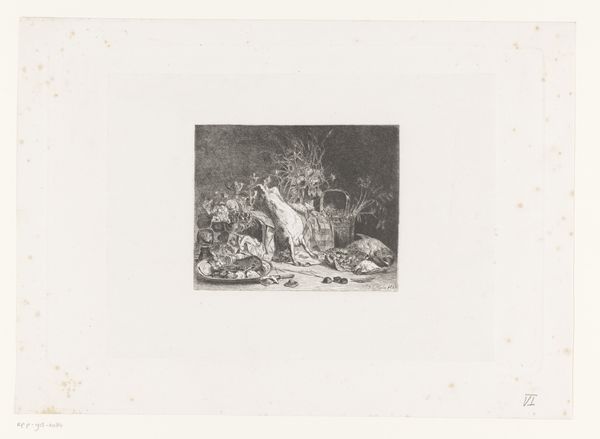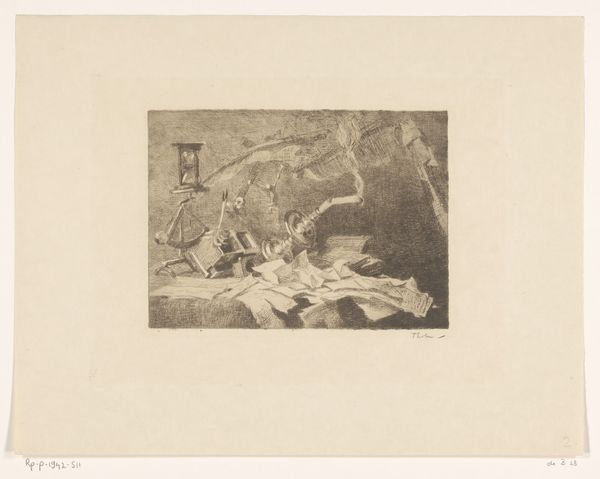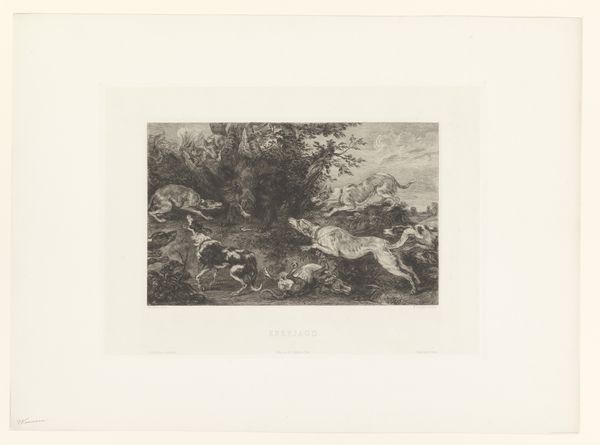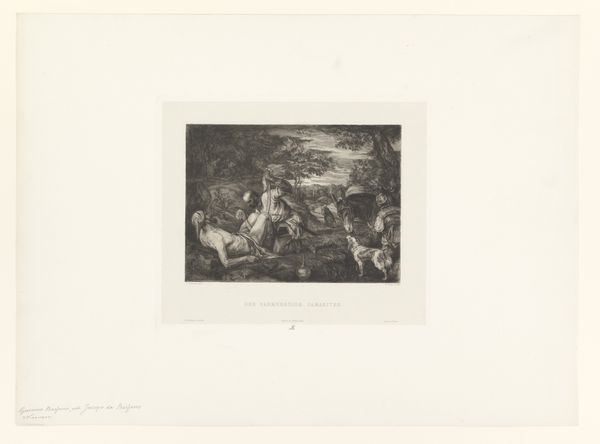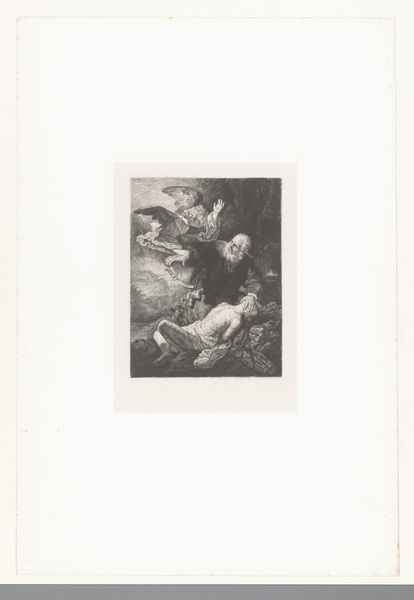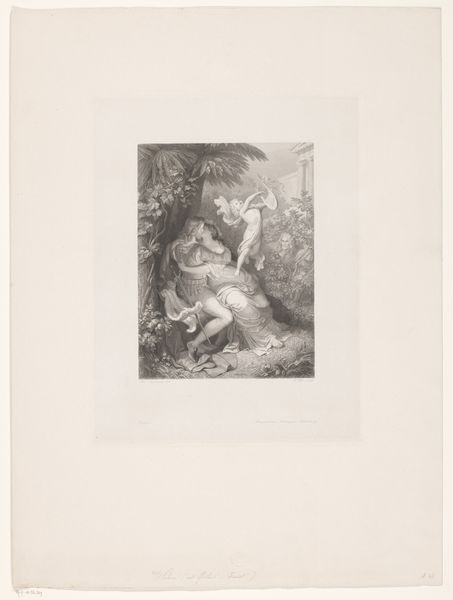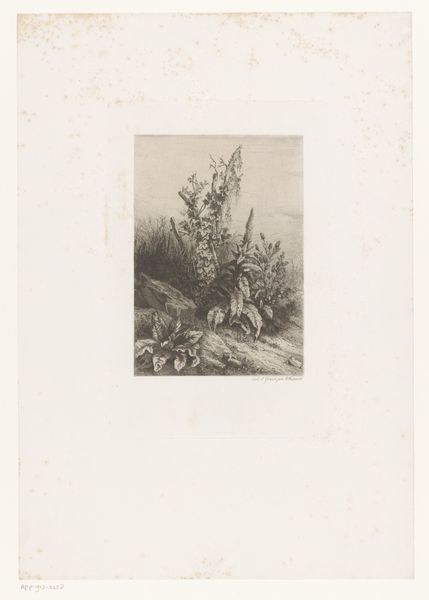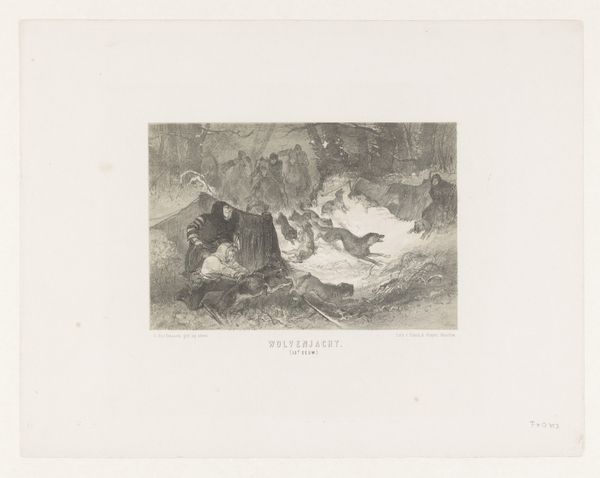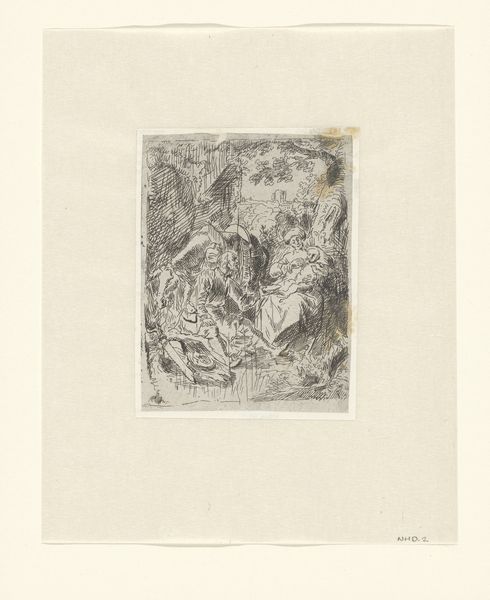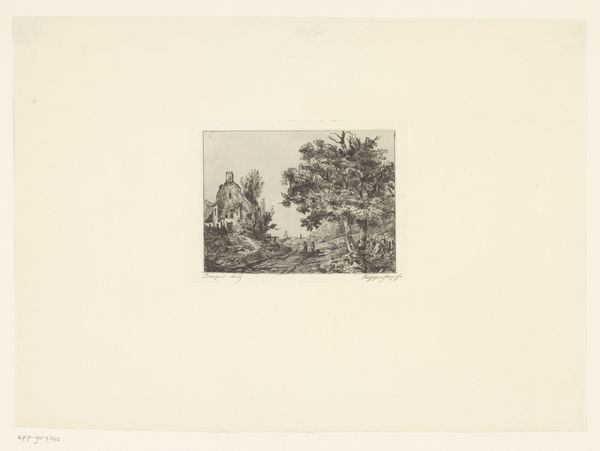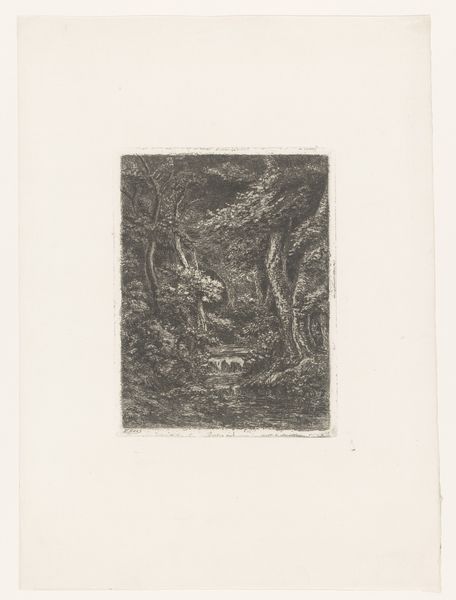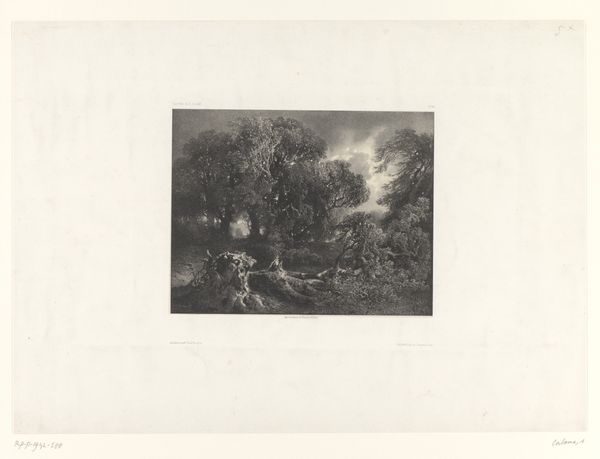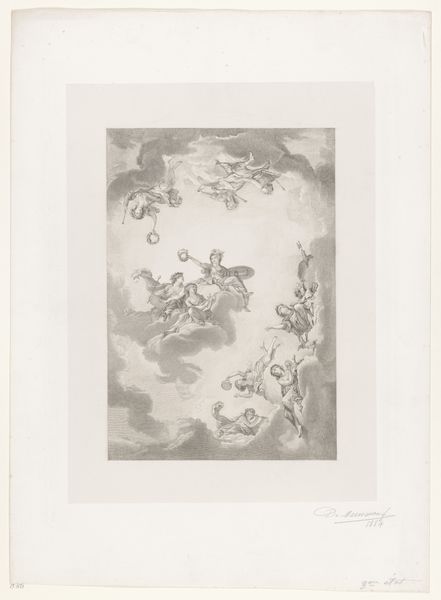
Dimensions: height 190 mm, width 141 mm
Copyright: Rijks Museum: Open Domain
Curator: Here we have "Park Landscape with Putti near a Veiled Statue," an engraving, likely made between 1878 and 1904 by Marie Louveau-Rouveyre. Editor: It has a wistful quality; everything is softened, even the stone. A tranquil dreamscape, rendered in shades of gray. Curator: As an engraving, it allows for remarkably fine detail, a crucial factor in replicating the atmospheric perspective seen in romantic landscapes. We can almost feel the texture of the paper used and the careful labor expended. Editor: The romantic elements are clear: the soft focus, the veiled statue suggestive of mystery, and of course the cherubic putti, traditional symbols that heighten the emotional tenor. The engraver has really excelled at creating a scene full of wonder, with layers of meaning. Curator: But where did the copper plate originate? How does it connect to the larger print market of its time, shaping both the reception and means of producing artwork like this? Consider the class associations, as engravings like these were frequently reproduced as keepsakes, signs of culture for middle-class households. Editor: I'm drawn to the tonal contrasts Louveau-Rouveyre achieves with her engraving. Notice how light filters through the foliage, creating these almost ethereal effects on the forms of the putti and the draped figure of the statue? Curator: And consider the very act of veiling the statue; it transforms the artistic symbol, questioning cultural norms of representation at the time. I see the process of revealing and concealing not merely as symbolism but as an intentional engagement with societal values surrounding labor, access, and visual pleasure. Editor: Right, a compelling interplay between revelation and obfuscation! Ultimately, though, I return to its beauty: this singular world fashioned by lines etched into metal. Curator: Exactly, we can explore its beauty while being conscious of what creates those aesthetics, placing art production in conversation with history and culture.
Comments
No comments
Be the first to comment and join the conversation on the ultimate creative platform.
